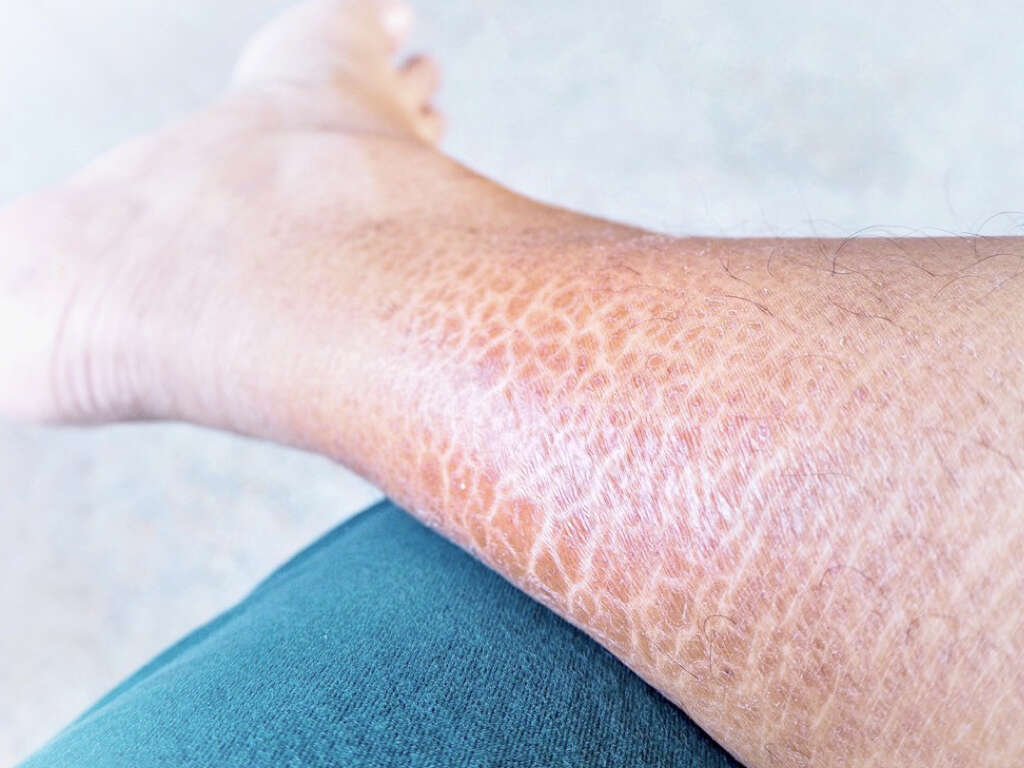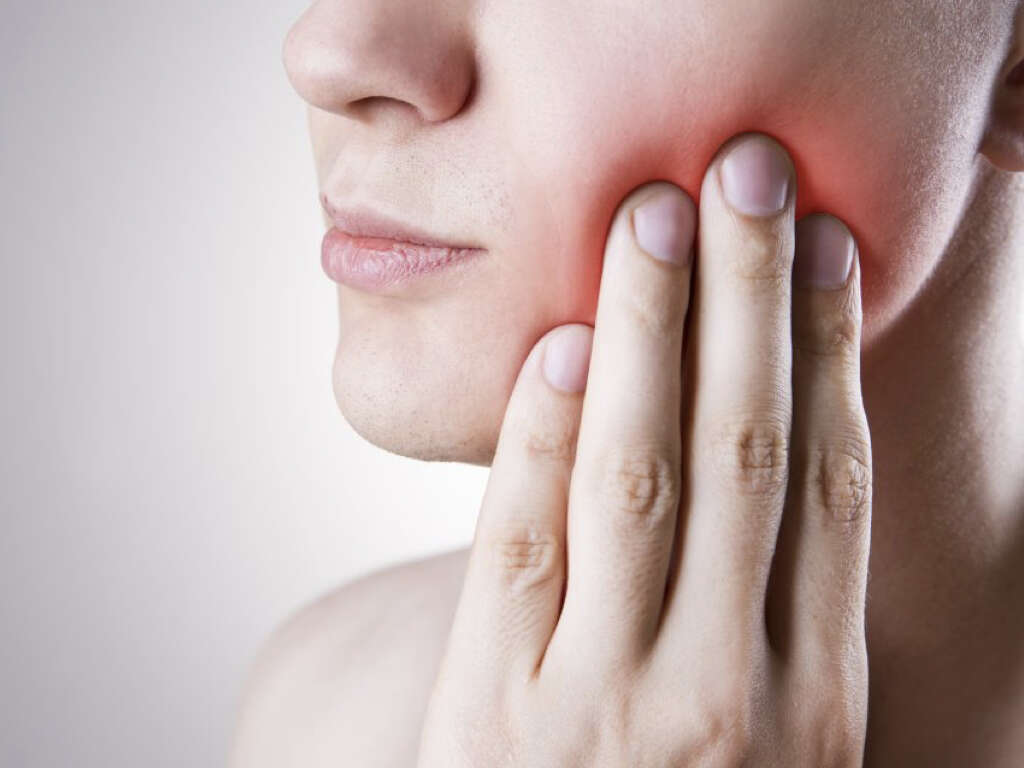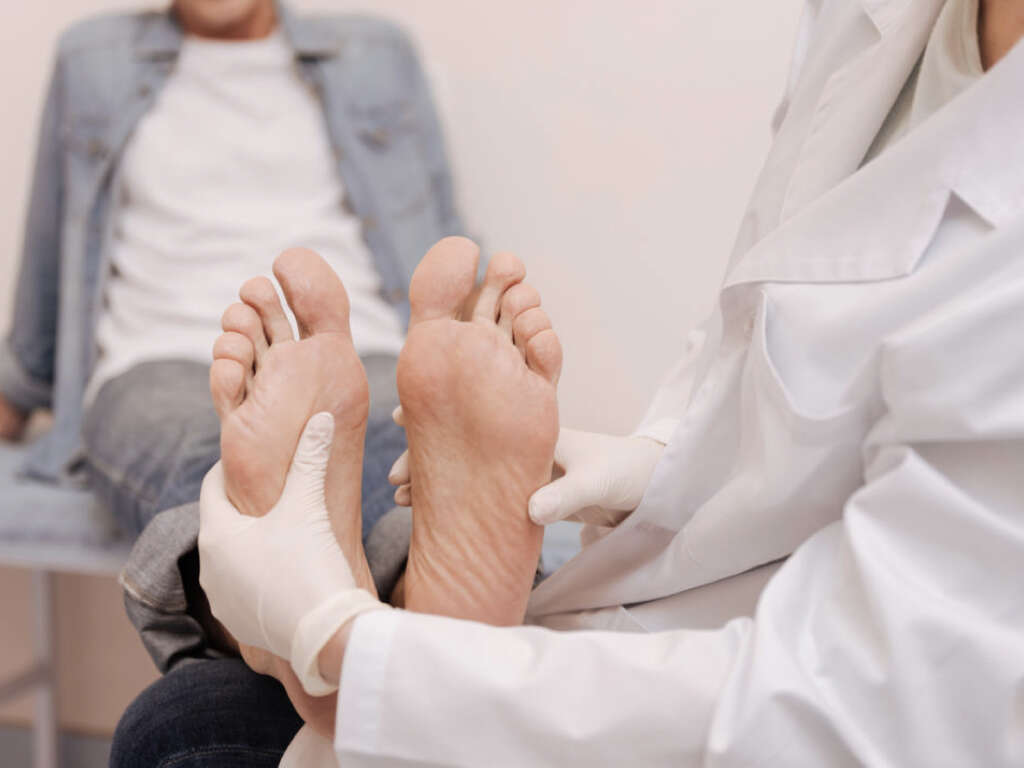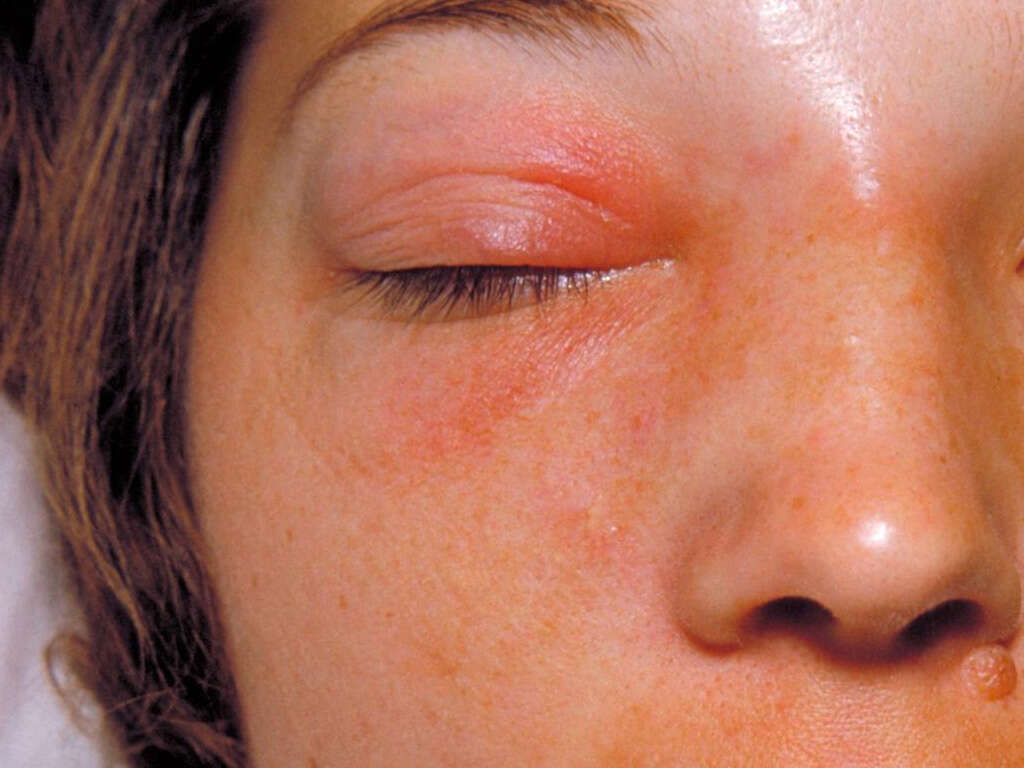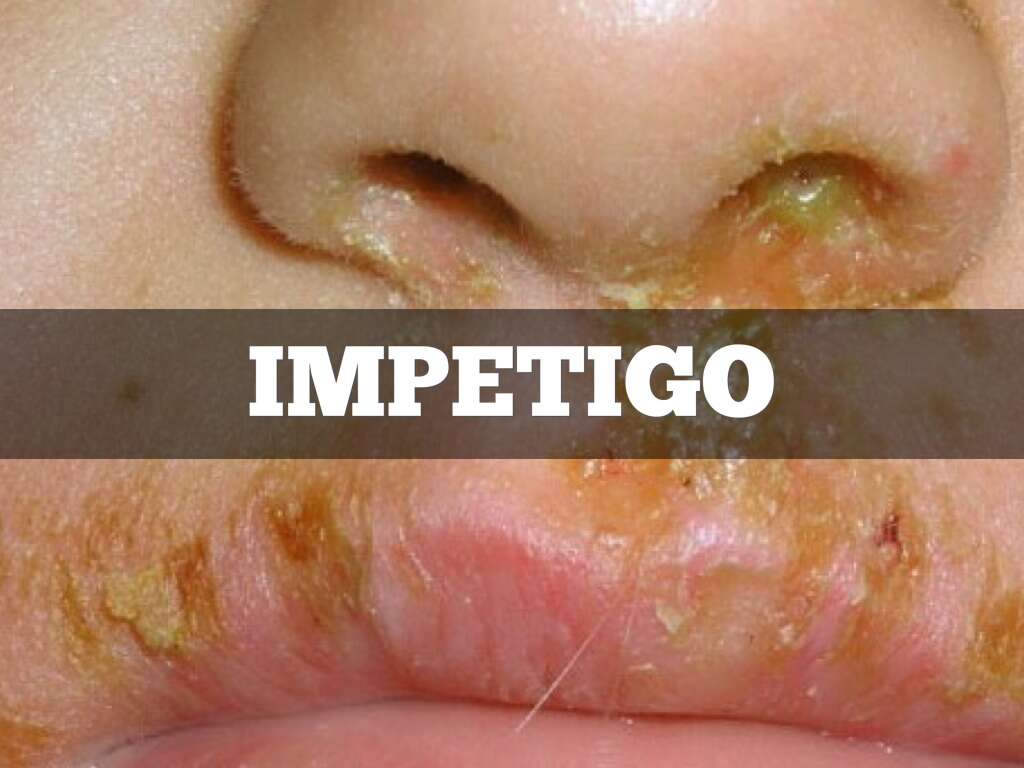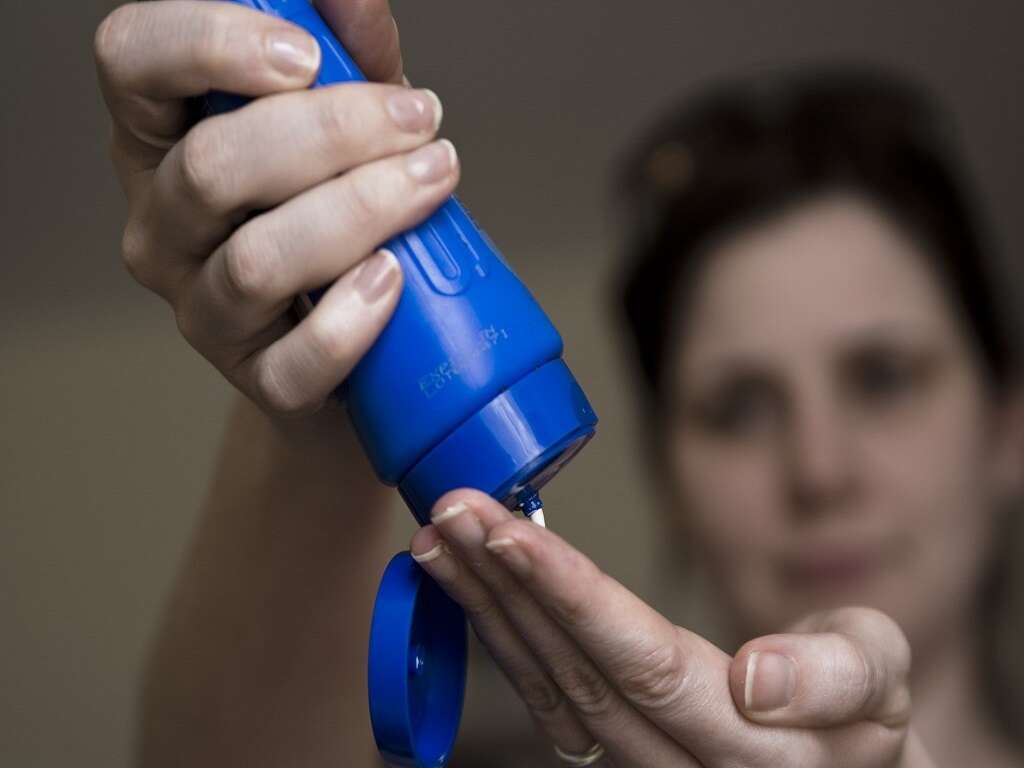10 Cellulitis Symptoms
 Article Sources
Article Sources
- 1. 'Cellulitis.' Johns Hopkins Medicine, www.hopkinsmedicine.org/health/conditions-and-diseases/cellulitis
- 2. 'Cellulitis.' Mayo Clinic, Mayo Foundation for Medical Education and Research, 6 Feb. 2020, www.mayoclinic.org/diseases-conditions/cellulitis/symptoms-causes/syc-20370762.
- 3. 'Cutaneous Abscess.' DermNet NZ, dermnetnz.org/topics/cutaneous-abscess
- 4. 'Cellulitis.' Penn Medicine, www.pennmedicine.org/for-patients-and-visitors/patient-information/conditions-treated-a-to-z/cellulitis
In its early stages, cellulitis appears as slightly inflamed skin that's pink to red. As it progresses, its color can darken to a deeper red, and the inflamed area can become swollen, tender and warm. Those with cellulitis may also find pus-filled bumps or blisters on affected areas.
The condition is caused by bacteria entering a wound or an area that's void of skin, such as mucous membranes found in the nose and mouth.1‘Cellulitis.’ Johns Hopkins Medicine, www.hopkinsmedicine.org/health/conditions-and-diseases/cellulitis Poor skin hygiene and circulation problems can also cause infections. Cellulitis has several other symptoms, some of which are more severe and painful than others.
Inflamed Skin
Cellulitis usually occurs on one side of the body, commonly on the lower legs. If medical advice or attention is not sought, the infection could spread to the lymph nodes and bloodstream and become life-threatening. Cellulitis has an incubation period of anywhere from 24 hours to several days, depending on the type of bacteria that caused it.
The first symptom that many people experience is inflamed skin. Initially, the infected area may have minimal inflammation. As the infection spreads, the inflamed area can grow and quickly progress from a pinkish color to deep red.
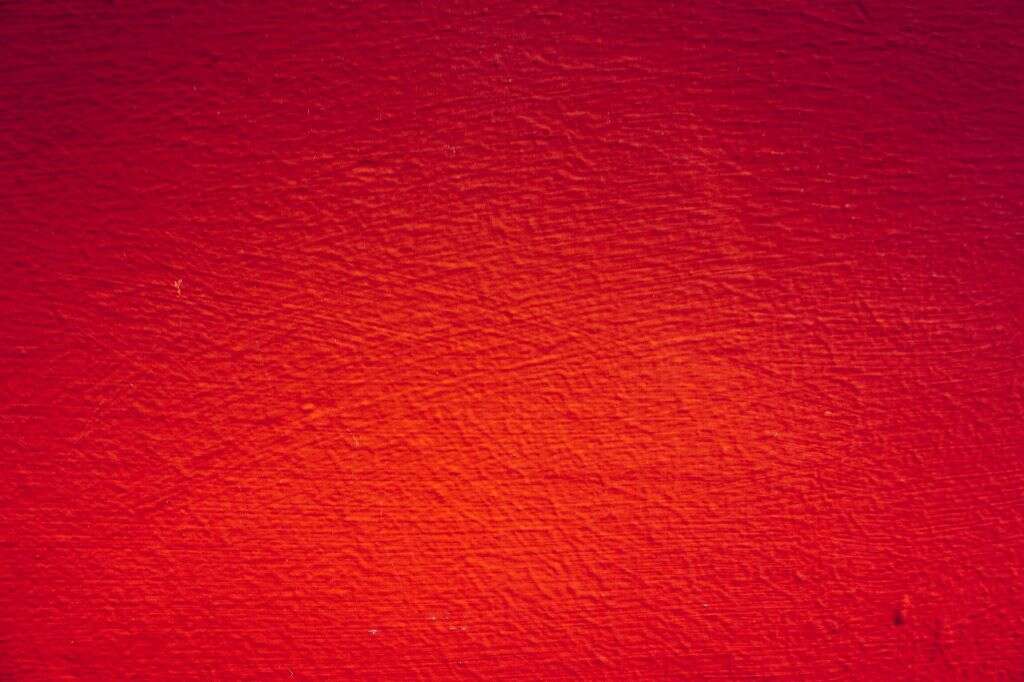
Warm Skin
Mild cellulitis can go away on its own, but often a course of antibiotics is required. Whether it's mild or severe, an individual with cellulitis should seek medical attention to avoid complications.2‘Cellulitis.’ Mayo Clinic, Mayo Foundation for Medical Education and Research, 6 Feb. 2020, www.mayoclinic.org/diseases-conditions/cellulitis/symptoms-causes/syc-20370762.
Infections that develop in a wound or incision, such as cellulitis, cause the body to send infection-fighting blood cells to the troubled location. This results in the infected area of the skin feeling warm to the touch.

Blisters
For some individuals with cellulitis, the infected area may resemble the pitted skin of an orange, and blisters may form. Blisters are clusters of fluid between the upper layers of a person's skin and are commonly caused by burning, friction, chemical burns and infections, such as cellulitis.
People should resist the temptation to burst these blisters, as doing so could help spread the infection. If they become too big and cause pain, a doctor can drain them.

Abscess
Compared to a blister, an abscess is usually bigger, affects deeper layers of the skin and is more painful. Abscesses, which are red and deeper than a blister, have thick, cloudy white or yellow pus. The pus contains dead tissue and bacteria.3‘Cutaneous Abscess.’ DermNet NZ, dermnetnz.org/topics/cutaneous-abscess
Cellulitis treatment usually includes antibiotics. In case an abscess develops, it may need to be surgically drained. A physician numbs the area before making an incision to drain the pus.

Rash
Certain skin conditions, such as eczema and athlete's foot, can cause breaks in a person's skin, making it vulnerable to bacterial infections, which can lead to cellulitis.
If an individual is in good health, they can expect the infection to clear up within a few days after starting an antibiotic. More severe cases of cellulitis can take longer, especially if they coincide with other medical conditions. Cellulitis doesn't cause rashes similar to eczema or psoriasis, but can cause red spots or streaks on the skin.

Pain
Not only can cellulitis be tender and inflamed, but it can also be painful, especially in more severe cases. The infection leads to swelling, which causes pain as it forces the skin to stretch.
If the pain seems severe in comparison to the size of the inflamed area, it could indicate that the infection has embedded itself deeper into the skin. This might be a sign of a more serious infection, a life-threatening condition known as necrotizing fasciitis.

Fever
Viruses, fungi, bacteria, and other toxins can cause a person to develop a fever as their body responds to the invader. It's more difficult for viruses and bacteria to survive in a person with a fever. Cellulitis is often caused by infections with staphylococcus and streptococcus bacteria.
Fever may accompany more severe cases of cellulitis, and body temperatures may rise to 100.4 degrees F. A doctor may advise over-the-counter medication, such as ibuprofen, especially if the fever is exceptionally high or causing discomfort.

Drowsiness and Fatigue
Certain cellulitis symptoms, such as drowsiness and fatigue, could indicate that the infection is spreading. Cellulitis that has spread may cause severe fatigue and drowsiness. The individual infected may become abnormally sleepy during the day, and falling asleep at inappropriate times is not unusual.
Cellulitis can also cause fatigue. Individuals with cellulitis may lack energy and experience total exhaustion. People experiencing excessive tiredness should immediately consult a doctor because many infections or other conditions can cause fatigue.4‘Cellulitis.’ Penn Medicine, www.pennmedicine.org/for-patients-and-visitors/patient-information/conditions-treated-a-to-z/cellulitis

Cold Sweats
Many conditions can cause cold sweats, including cellulitis. Cold sweats occur suddenly and make your skin feel cold or cool and clammy, and it's unrelated to physical exertion or heat. These sweats are more commonly associated with fever and swollen, red skin.
Cold sweats can indicate a serious illness, injury or infection. The treatment for cold sweats involves addressing the underlying cause.. Patients experiencing cold sweats should seek medical attention.
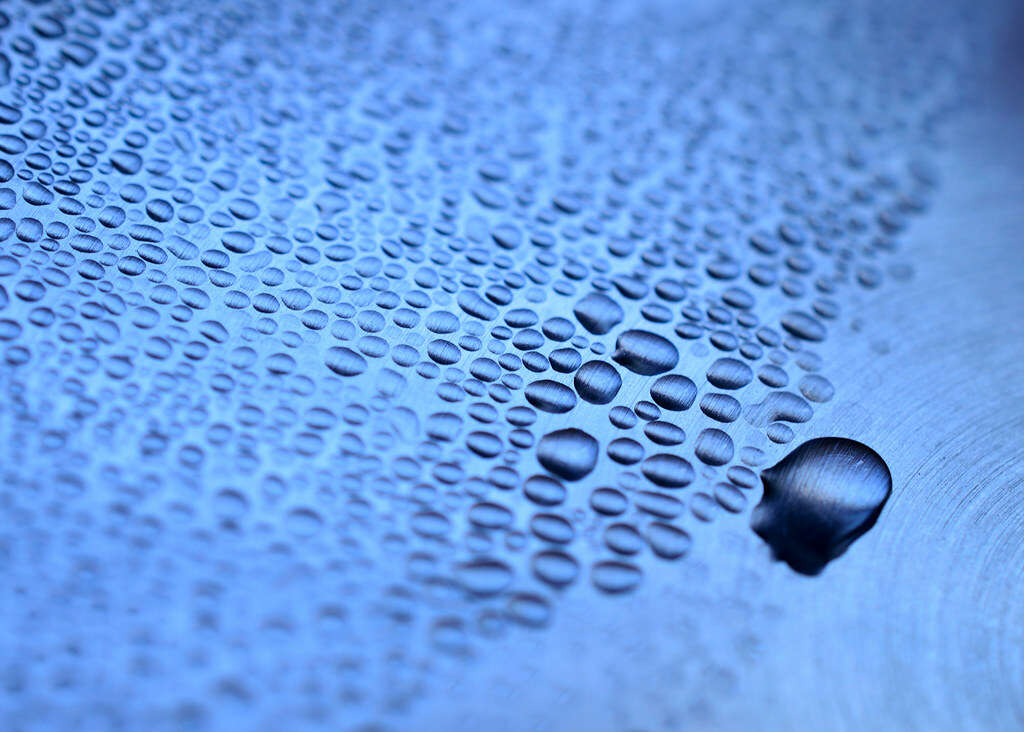
Itching
If an individual with cellulitis experiences an itching sensation, it's usually a good sign that the condition is improving. The skin may also feel itchy if the cellulitis develops on an area affected by eczema, psoriasis or fungal infection.
Applying a cool, damp cloth on the affected area can help manage cellulitis and reduce itchiness. It's important to take the full course of antibiotics as prescribed by the doctor, even if the symptoms improve after a few days.



